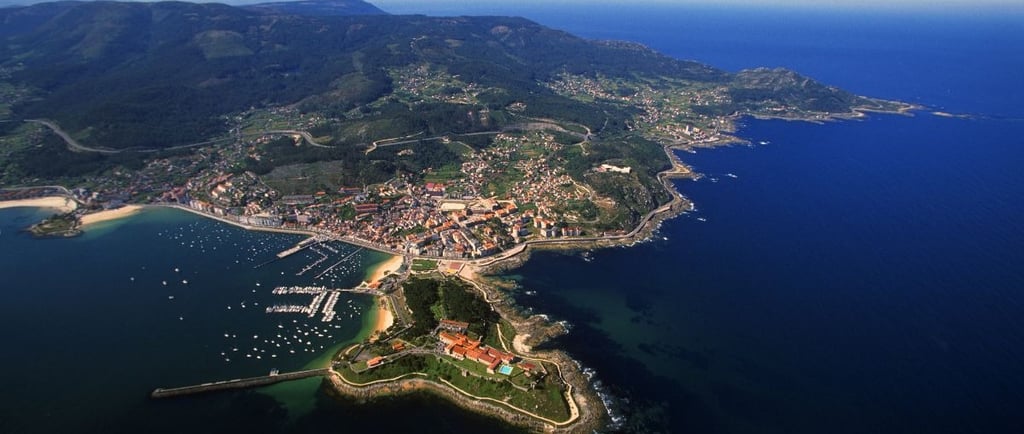Camino de Santiago from Baiona
Discover the Camino de Santiago from Baiona: detailed stages, practical tips, and spectacular coastal landscapes. A unique pilgrimage along the Atlantic Coast


The Camino de Santiago is one of the most famous pilgrimages in the world, and the Portuguese Coastal Route, starting from Baiona, has become increasingly popular among pilgrims. This route not only offers the chance to experience the rich history and culture of Galicia but also provides the scenic beauty of the Atlantic coastline. Walking from Baiona to Santiago de Compostela is an experience that combines spirituality, nature, and adventure.
Preparations for the Camino
Before embarking on the Camino de Santiago from Baiona, some preparations are essential. Proper planning includes deciding the time of year for the pilgrimage, with spring and autumn being the most recommended seasons due to their mild climate. It's also crucial to prepare the necessary gear, such as a comfortable backpack, suitable hiking boots, and technical clothing to face various weather conditions.
Stages of the Portuguese Coastal Route
The Portuguese Coastal Route from Baiona is divided into several stages, each with its own challenges and charms. Here is a day-by-day breakdown of the journey.
Stage 1: Baiona to Vigo
Distance: 23.6 km
Description: The first stage takes pilgrims from the historic town of Baiona, famous for being the place where the discovery of America was announced in 1493, to the city of Vigo. The path is mostly flat and follows the coastline, offering spectacular views of the Atlantic Ocean. Along the way, pilgrims can enjoy picturesque beaches and small fishing villages.
Stage 2: Vigo to Redondela
Distance: 15.8 km
Description: This stage is shorter, allowing pilgrims to enjoy a more relaxed day. Leaving Vigo, the route continues north, entering the green and mountainous landscape of Galicia. Redondela, known for its two railway viaducts, is a charming town to rest and enjoy local hospitality.
Stage 3: Redondela to Pontevedra
Distance: 19.6 km
Description: The third stage takes pilgrims through a rural landscape filled with vineyards and forests. Pontevedra, one of the most beautiful cities in Galicia, offers a well-preserved old town and numerous historical monuments. It's a perfect place to explore and recharge.
Stage 4: Pontevedra to Caldas de Reis
Distance: 23 km
Description: This stage follows rural roads and forest trails. Caldas de Reis is known for its hot springs, and many pilgrims take the opportunity to relax in one of its spas.
Stage 5: Caldas de Reis to Padrón
Distance: 18.5 km
Description: The penultimate stage before reaching Santiago de Compostela takes pilgrims through green valleys and tranquil villages. Padrón is famous for its peppers and for being the place where, according to legend, the body of the Apostle James arrived in Galicia.
Stage 6: Padrón to Santiago de Compostela
Distance: 24.5 km
Description: The final stage is exciting and emotional. As they approach Santiago, pilgrims feel a mix of exhaustion and anticipation. Arriving at the majestic Cathedral of Santiago de Compostela is the climax of the journey, marking the end of the pilgrimage.
Distance and Difficulty Level
The Portuguese Coastal Route from Baiona covers approximately 125 km, divided into six stages that vary in length and difficulty. Although the route is mostly flat due to its proximity to the sea, some stages can present moderate challenges, especially on rural and forested terrain. It's important to be well-prepared physically and mentally to fully enjoy the journey.
Points of Interest on the Camino
The Camino de Santiago from Baiona is full of cultural and historical points of interest. Some of the highlights include:
Monterreal Fortress in Baiona: Offers impressive panoramic views and a history lesson.
Santa María Cathedral in Vigo: A notable example of Galician religious architecture.
Old Town of Pontevedra: Ideal for strolling and enjoying its architecture and cuisine.
Hot Springs of Caldas de Reis: Perfect for a well-deserved rest.
Herbón Convent in Padrón: Known for its history linked to the Apostle James.
Tips and Recommendations for Pilgrims
To make the most of the Camino de Santiago from Baiona, here are some practical tips:
Planning: Ensure you have a clear itinerary and book accommodation in advance, especially during high season.
Equipment: Carry only the essentials. A light backpack is key to avoiding injuries.
Hydration and Nutrition: Stay hydrated and carry energy snacks. The local food is delicious and nutritious.
Physical Preparation: Go on preparatory hikes before the trip to get used to long distances.
Enjoy the Journey: Take your time to enjoy the scenery and the company of other pilgrims.
Why walk the Camino from Baiona
The Camino de Santiago from Baiona is not only a beautiful and accessible route but also rapidly gaining popularity. The journey, which largely follows the Atlantic coast, is mostly flat, making it accessible to people of different fitness levels. The landscapes are breathtaking, with ocean views, secluded beaches, and charming fishing villages. It’s a rewarding experience both physically and spiritually, allowing pilgrims to connect with the nature and history of Galicia.
Choosing the Camino de Santiago from Baiona is an excellent option for those seeking a unique pilgrimage experience. The combination of stunning coastal landscapes, rich Galician history and culture, and the relative accessibility of the route make this path a perfect choice for pilgrims. Whether you seek a physical challenge, a spiritual adventure, or simply a way to explore the beautiful region of Galicia, the Portuguese Coastal Route from Baiona has something special to offer every traveler.


